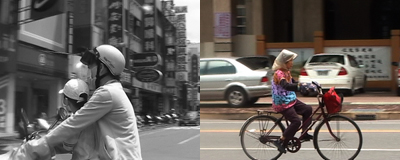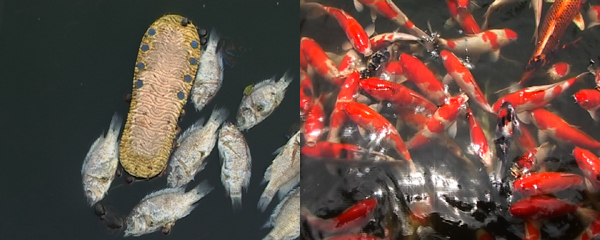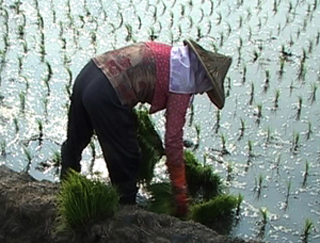 “Yunshan (Il Monte Yun) è la culla dell’etnia Zhou, è il luogo originario da cui si è diffusa la gente Zhou. Noi crediamo che lo spirito celeste Amu sia disceso in questo luogo per creare il popolo Zhou, ed è qui che la gente Zhou ha assorbito i suoi insegnamenti. Secondo il dio Amu, noi pensiamo che sia possibile vivere liberamente e scegliere la propria dimensione nella vita, ma Amu ci ha detto: potete scendere dalla montagna e disperdervi nel mondo a cercare un mondo per voi migliore, ma dovrete stabilirvi nel luogo dove sono le mie impronte e costruire lì un tempio in mio nome. Questo è ciò che sappiamo e crediamo dal principio sul Monte Yun”.
“Yunshan (Il Monte Yun) è la culla dell’etnia Zhou, è il luogo originario da cui si è diffusa la gente Zhou. Noi crediamo che lo spirito celeste Amu sia disceso in questo luogo per creare il popolo Zhou, ed è qui che la gente Zhou ha assorbito i suoi insegnamenti. Secondo il dio Amu, noi pensiamo che sia possibile vivere liberamente e scegliere la propria dimensione nella vita, ma Amu ci ha detto: potete scendere dalla montagna e disperdervi nel mondo a cercare un mondo per voi migliore, ma dovrete stabilirvi nel luogo dove sono le mie impronte e costruire lì un tempio in mio nome. Questo è ciò che sappiamo e crediamo dal principio sul Monte Yun”.
Festivals | Sinossi | Art as Environment | Crediti | Foto |
Shortendmagazine | Video
Festivals e Rassegne

Megalopolis Audio Festival, New York 2013
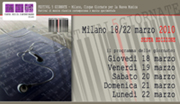
FESTIVAL 5 GIORNATE 2010 – Milano, Cinque Giornate per la Nuova Musica
![]()
CINEMAVVENIRE VIDEO FESTIVAL 2010 – Roma

Strasbourg International Film Festival 2008 – Selezione Ufficiale
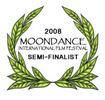
Moondance Film Festival 2008 Semi-Finalist

GLOBIANS Film Festival 2008: 4th Globians world and culture documentary film festival – Selezione Ufficiale

EarthVision International Environmental Film Festival – Katherine Knight Award 2008
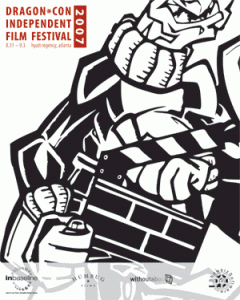
Dragon*Con Film Festival 2007– Selezione Ufficiale
![]()
Urban Nomads Film Festival 2007 – Selezione Ufficiale
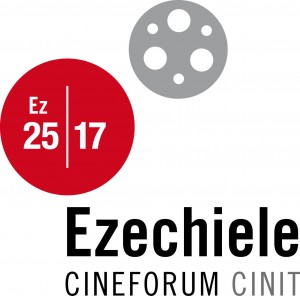
Lucca, Cineforum Ezechiele, marzo 2007
Sinossi
Il progetto è nato casualmente da un viaggio ancor più casuale fatto a Taiwan nell’Agosto 2006. Durante la prima settimana del mese trascorso nella Contea di Chiayi, ho sprecato una gran quantità di riprese perché tutto è interessante, tutto va filmato, perché tutto è terribilmente esotico; si viene così a perdere il senso della questione, e cioè che per i Taiwanesi e gli Asiatici in genere, noi occidentali siamo esotici, e soprattutto… ci somigliamo tutti, come gocce d’acqua.
La seconda settimana l’idea della sinfonia è partita alla sorgente di un fiume di montagna, più precisamente ai margini di un piccolo campo coltivato a tè, dove una donna stava gettando manciate di concime con un bel gesto ampio ed un’andatura che mi ha ricordato (data la bardatura) i sopravvissuti dalla catastrofe nucleare agli inizi de “Lo stato delle cose”, di Wim Wenders; la scena ovviamente non c’entrava nulla, anche perché la colonna sonora naturale del luogo erano le cicale, un tipo particolarissimo che si ode solo sui monti di Alishan e che mi ha ricordato il Teatro della Musica Eterna di la Monte Young (ma anche il canto armonico dei pastori mongoli).
E allora l’idea, che forse anch’essa non c’entra un gran che, della sinfonia, prendendo dalla sinfonia classica solo i titoli e nemmeno un poco la struttura (otto movimenti più una manciata di interludi, a differenza dei quattro movimenti sette-ottocenteschi).
Una sinfonia di suoni e immagini che partendo dalle montagne si snoda lungo i corsi d’acqua delle risaie per arrivare al mar cinese, raccogliendo lungo il cammino memorie del paesaggio, dei movimenti della gente, dei canti e soprattutto dell’ineluttabilità del tutto, l’eterno ciclo del tifone, che arriva non appena i Taiwanesi accendono i ventilatori e scompare quando li spengono, polli, oche e maiali cucinati, mangiati, digeriti e scaricati, gli adulti e i bambini, il gioco e il lavoro, il traffico cittadino, i mercati e i venditori ambulanti, lo zapping televisivo, le marionette e le lezioni di flauto…
CHIAYI SYMPHONY è solo in apparenza un documentario; si colloca piuttosto in una terra di mezzo, dove reportage e memoria storica si confondono con rappresentazioni oniriche e archetipi, strutturati più in chiave sonora o astratta che secondo le logiche narrative del cinema.
Art as Environment – Un’azione culturale al
Tropico del Cancro 2006
Il film è parte del progetto ART AS ENVIRONMENT – A CULTURAL ACTION IN TROPIC OF CANCER 2006, promosso da un gruppo di operatori culturali e artisti di Taiwan, guidati dall’artista visiva/concettuale Wu Mali, e finanziato dal Governo della Contea di Chiayi; scopo del progetto è quello di rivalorizzare un territorio devastato troppo spesso da un’urbanizzazione selvaggia e caotica, mettendo artisti a lavorare in piccoli paesi della Contea a contatto con la gente per educare il popolo al valore dell’arte e dunque della vita; ecco che una quindicina di artisti Taiwanesi (e un Italiano, il sottoscritto) hanno lavorato in 10 paesi della campagna creando sculture, pitture, musiche, video, ma soprattutto cercando di far partecipare contadini, popolazioni native, pescatori e gente del luogo nel processo creativo.
Titoli e Crediti
CHIAYI SYMPHONY (2006/2007)
(1) Adagio
(2) First Interlude
(3) Allegro non troppo
(4) Andante
(5) Second Interlude
(6) Concertato
(7) Scherzo
(8) Third Interlude
(9) Fourth Interlude
(10) Agitato
(11) Rondò
(12) Fifth Interlude
(13) Finale
Subtitles: Italian / English
Progetto, direzione musica ed editing: Stefano Giannotti
Prodotto da Stefano Giannotti, in collaborazione con il Governo della Contea di Chiay in Taiwan, e ART AS ENVIRONMENT – A CULTURAL ACTION IN TROPIC OF CANCER 2006
Interpreti:
gli abitanti delle seguenti comunità: Laiji – Fengshan – Shizi – Hexing – Sanjiao – Ziyun – Dalun – Jia Dong Jiao – Tugou – Budai
Narratore aborigeno: Kao De-Sheng
Burattinaio: Sie, Tian-Yi
Bambini della comunità di Dalun: Betty, Frank, Lili, John, Vian, Penny, Stamluy, Tiger
Donna nella risaia: Al-mei
Cantanti Hakka: Sie Fa Shui , Luo Huan Bin
Suonatori nel giardino del tempio: Lyu Jian Jhong, Lyu Hai Liang, Lyu Jin Lu, Shen Li Shan, Shen Yi Chen
Cantori di Fengshan: Liou Guei Bi, Wang Mei Huan, Gao Ciou Cin, Jhu Wan Pin, Lai Li Yu, Syu Ming Chao, Syu Ming Yue
Pescatori: Tsai Bin Chia, Tsai Chorng Chen
Altri interpreti: Ueng Chyung Jen, Huang Yuan Jing, Zeng Siou Mi, Shen Rong Shou, Fang Yong Jing, Shen De Sheng, Tu Ciou Yue, Zeng Shu Fong, Tu Ling Jhih, Zeng De Sing

Coordinatori generali: Lin Chun Yung, Lee Zhong Min
Co-curatore: Chen Hungyi
Assistenti: Lu Yan Kun, Chen Ming-Yu, Su Guan-Yin , Pan Yun Wei, Tsai Jeong Chyou, Tsai Ching Wen, Tseng Chang Sen, Jiang Kai Siang, Jiang Mu Cheng, Huang Siao-E, Jien Tien Shang
Un ringraziamento speciale a: Art As Environment – A Cultural Action In Tropic Of Cancer, Taiwan 2006
Wu Mali: direttore artistico
Wen-bang Tsen: produttore
e Chiayi County Cultural Affairs Bureau Director-general: Sig. Yong-feng Zhong
Un ringraziamento speciale per il grande aiuto a:
Lee Zhong Min: capo della comunità di Dalun
Lu Yan Kun: video-maker
Kun, Wen Hsiao Mei, Huang Wen Yuan: artisti
Lu Ming Chen: capo della comunità di Togou
Prodotto da Stefano Giannotti
Fra Agosto 2006 e Aprile 2007
Formato originale: miniDV Disponibile in: miniDV, Beta Sp PAL, DVD PAL
© Copyrights by Stefano Giannotti, All Rights Reserved
Documentazione fotografica
Photos by Pan Yun Wei
Shortendmagazine’s Review
by Kim Storeygard
Truly a new voice in the field of experimental film, Stefano Giannotti wrote, directed and produced an exercise in juxtaposition when he created Chiayi Symphony. Giannotti admits to having shot the film almost casually on a trip to Taiwan in August of 2006, but the finished product is a startling commentary on the universality of the human condition.
Though called a symphony, Chiayi Symphony does not follow the traditional pattern of symphonic movements. Through the 18th and 19th century, symphonies generally consisted of four movements of varying tempos each separated by a short pause. But Giannotti’s modification not only eschews most traditional instruments and chord structures, it lacks narrative structure entirely.
The single semi-narrative thread throughout the film is the voice of one man speaking during the opening Adagio. He is a fisherman who introduces the legend of Hamu (a Taiwanese God who encouraged humans to live in the shadow of his mountain in rural Taiwan), and speaks of how humans coexisted with nature in the “footsteps” of the god. However, the man’s voice disappears after the initial movement, but the idea behind his story is continued through another similar voiceover at the end of the film, which continues our meditative exploration of how much the world has changed since the time of Hamu’s birth in the mountains.
The film opens with an Adagio, consisting of ambient natural sounds and some soft harmony and dissonance as the camera slowly pans over rice paddies and mountain vistas. Giannotti creates an almost meditative air with his pacing, and draws the viewer quietly into a different mode of understanding the events and sensations of everyday life in Chiayi County, Taiwan.
It continues into the first of five Interludes, all of which are very short scenes of a man who seems to be performing a show of sorts with traditional Taiwanese dolls or puppets. Unfortunately, there is no translation for what the man says, but as we get into the rhythm of the film, we realize that knowing what anyone may say is largely irrelevant, and that it is the organic nature of the human voice and the presentation of culture and art that is important.
The film’s purpose, as I see it, is primarily to show how everyday life in any city, whether in Taiwan, America, or any other country, is universally similar. By taking small clips, visually and aurally from common occurrences, like garbage trucks or ducks quacking or TV programming, and putting them together in such quick snippets, as Giannotti does in the Scherzo and Agitato movements, we realize just how much we ignore on a daily basis in terms of visual and aural stimuli. The sounds and images of our daily lives are in fact, the symphony he is trying to show us.
Our lives are made up of continuous juxtaposition, and Giannotti uses this to great effect in Chiayi Symphony. His visuals move from rural country to busy city life, show live animals owned by people in contrast to those that have been slaughtered for the market. Pigs and poultry grunt and honk in harmonic and dissonant audio tracks while the images show people enjoying a family meal in the Scherzo movement. The events and scenes we experience on a daily basis and then ignore are brought to the forefront for examination in this careful presentation of humanity.
In the Concertato movement, numerous tracks of different groups performing music overlap and blend with each other in a curious kind of mélange while the images on screen float ostensibly from one performing group to another. Sounds of nature blend into gentle harmonies and dissonance created by Giannotti’s instruments, as well as his recordings from the city noises. At the beginning and the end of this section, Giannotti allows a single voice to break through the cacophony, echoing the voice of the fisherman from the first movement and continuing the bridge of human voices throughout the film.
I think one of the things we forget is that the sounds human beings make are just as organic and musical as anything else in the world. And the continuity of the human voice throughout the film is what ties it together so well. Providing that bridge, even just through untranslated sounds (the interludes, children playing, adults singing), allows one section to follow another and the film to coalesce into one work instead of disjointed images.
Chiayi Symphony begins with nature, and the human observation of nature, a little human interaction, but not much. Gradually humanity and cities and civilization become more prevalent through each movement, until we reach the finale, where we meet another fisherman. We see his interaction with nature, hear his voice, and see what he is describing. We witness the disappearance of the old fisherman and his ways. The influence of humanity is present in the pollution of the water, and the technology in the fish markets. We observe dead fish quietly floating in water filled with trash, a bitter irony for a man who makes his living selling healthy, edible fish to the markets.
As he finishes his narration, the film returns to nature, mirroring its audio track, and the life cycle it has so artfully shown us. Raindrops fall, and native Taiwanese flutes play simple melodies as live koi swim gracefully for the camera; a final juxtaposition of life and death.
VIDEO




